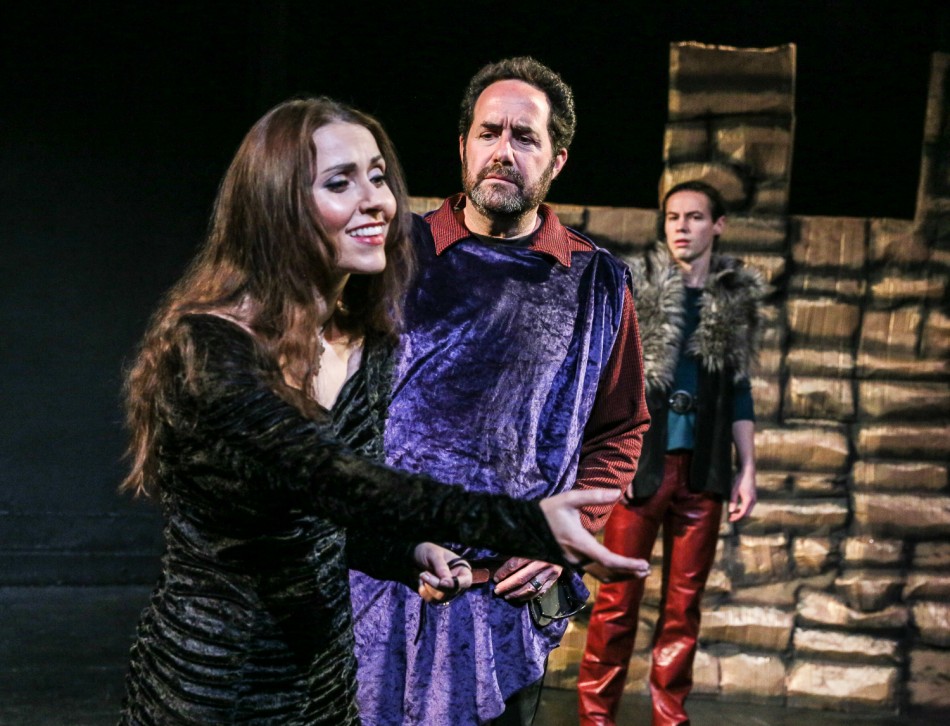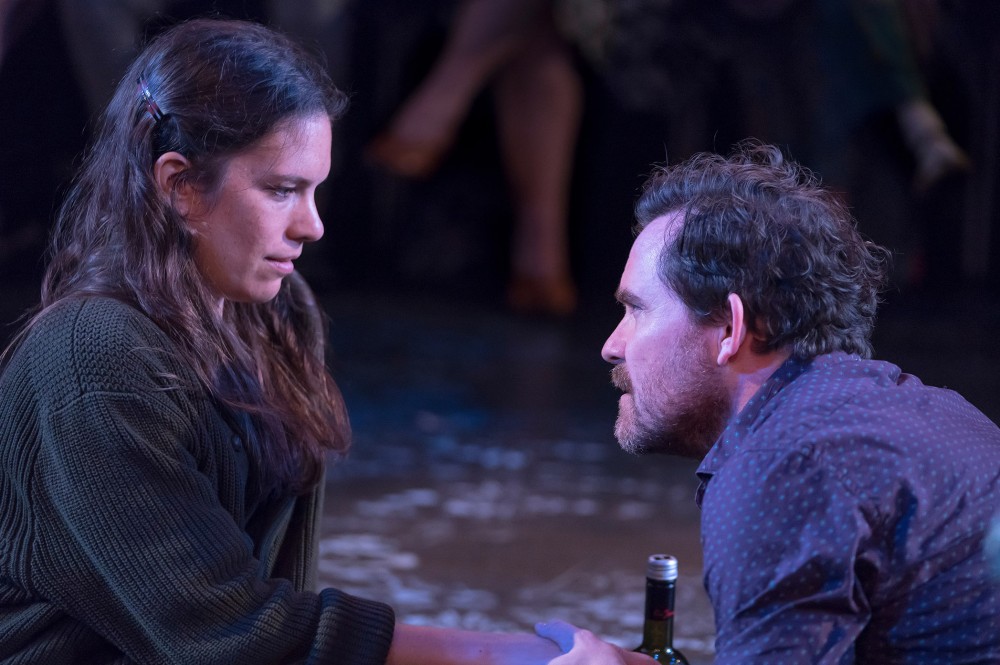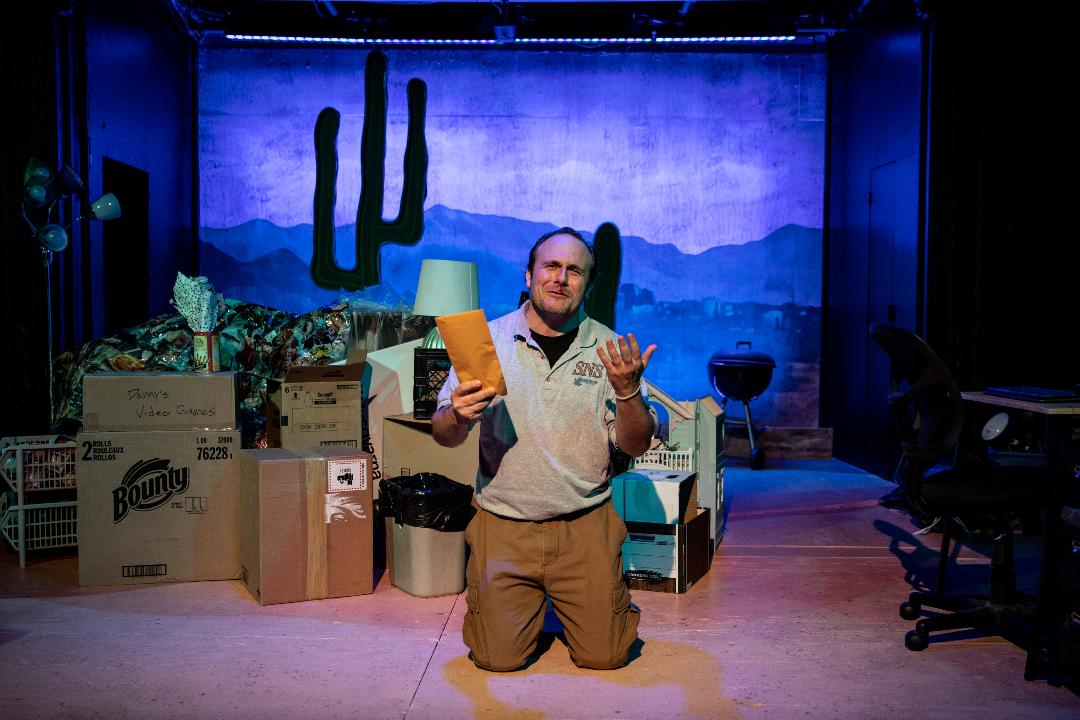By Marilyn Lester . . .
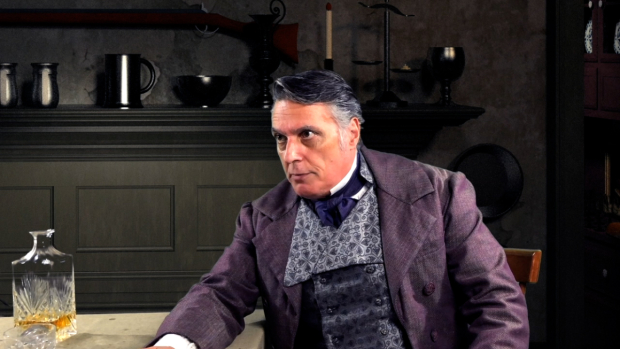
Eugene O’Neill’s A Touch of the Poet is a challenging play to mount at the best of times. It’s O’Neill’s last work (written in 1941) and far from hisbest, suffering from bouts of exposition and repetition over its four acts. In this on-screen production, the Irish Repertory Theater has made the best of a rough proposition. A Touch of the Poet was initially planned as a live production; instead it became a filmed presentation of miracle editing, featuring the intrepid cast of Belle Aykroyd, Ciaran Byrne, Robert Cuccioli, Kate Forbes, Mary McCann, Andy Murray, David O’Hara, Tim Ruddy, David Sitler and John C. Vennema. Each filmed their roles in separate locations, managing remarkable authenticity despite no one there to actually act with, a result immeasurably helped by the brilliant direction of Ciarán O’Reilly. Yet, despite technical excellence, A Touch of the Poet is the kind of play that needs the kinetic movement of the stage and the ability of the cast to interact to makes it fully work.
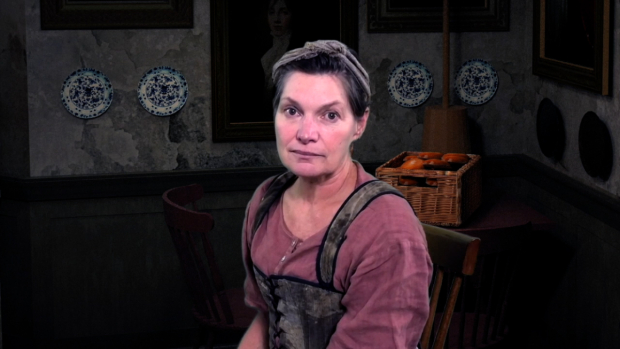

Principals Cuccioli, Forbes and Aykroyd anchor the play with determination and grit. Although Akroyd gives an uneven performance as Sara Melody, the daughter of Con and Nora Melody (Cuccioli and Forbes), she comes into her own in the climactic Fourth Act, where Nora’s character is also finally fully developed. But it’s Cuccioli who does the heavy lifting; his depiction of the pompous Cornelius “Con” Melody, an Irish immigrant full to the brim with airs and graces, is stunning. There’s no letup of his power and force in portraying this bear of a man who runs the gamut of tortured emotions typical of an O’Neill character. The themes of depression, alcoholism, death and, most of all, pipe dreams, are central to the plot and to the mercurial, conflicted, rage-filled Melody—and Cuccioli makes the most of him.
The play’s action takes place on a single day, July 27, 1828, the anniversary of the Battle of Talavera, the great 1809 conflict of the Peninsula Wars. Fighting check by jowl with Wellington, Major Melody was no less than heroic, which he’ll let no one forget. Every thought and action of Con’s is to remind those around him that he was born a gentleman in a castle on a great estate. Yet, we know in his current reality that he’s the proprietor of a failing tavern on the outskirts of Boston. Filled with pride, Con can’t accept his reduced circumstances, frequently quoting Byron to remind anyone who’ll listen (and himself) of his high-born status. In this poetic predilection, O’Neill gives a delicious sense of irony to the play’s title.
It’s daughter Sara that gives no quarter to Con’s airs and graces, although his long-suffering wife Nora and his tavern friends Dan (Ciaran Byrne), Jamie (Andy Murray), Paddy (David O’Hara) and Patch (David Sitler)—immigrants all and far from gentlemanly roots—are remarkably loyal to and tolerant of him. The constant squabbles with Sara come to a head over her unseen love interest, Master Hartford, who is one to the manor born. This relationship is the main cog in the engine that brings A Touch of the Poet to its brutal, climactic resolution. In small but pivotal roles, Mary McCann as Hartford’s mother and John C. Vennema as the attorney, Nicholas Gadsby, shine brightly.
When all is said and done, A Touch of the Poet belongs to Con Melody. He’s the creation of a playwright steeped in his own Irishness and personal demons—of life’s inequities and troubles. In the play’s often over-wrought and bloated wordiness it would be easy to allow Con to become cartoonish. Cuccioli transcends the trap and meets the challenge of elevating him to believability, especially in the play’s final scene of pseudo-religious conversion. In a Touch of the Poet, Cuccioli prevails magnificently, leading a very able cast in an almost impossible exercise.
Credit also goes to green-screen backdrop design by Charlie Corcoran, video editing by Sarah Nichols, Ryan Rumery for incidental music, Alejo Vietti for costume design, Michael Gottlieb for lighting design and M. Florian Staab for sound design and mix.


www.IrishRep.org On Screen – Remaining Performance February 16. HERE
Photos Courtesy of Irish Repertory



